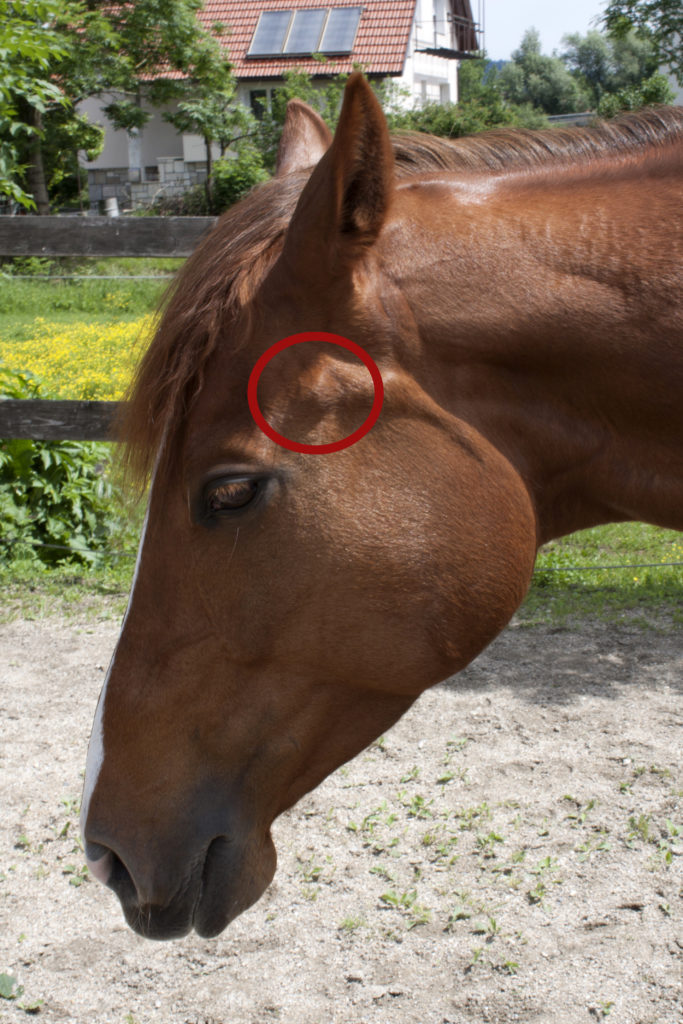THE TEMPOROMANDIBULAR JOINT – PART 1 BY KATJA PORENTA, EEBW
SMALL JOINTS, BIG PROBLEMS
The horse’s joints are an important topic in the equine industry, as joint issues like degenerative disease, are a very common sight among riders and horse owners. When we talk about joint issues, we usually refer to the joints of the legs – the hocks, the stifles, the fetlocks, as dysfunction in any of these directly affects the horse’s movement. One of the joints that does not get the attention it deserves, is the temporomandibular joint – the TMJ. This seemingly insignificant joint, connecting the horse’s lower jaw to his skull, can actually be the cause of a great array of issues.
Whoever thinks that the only thing that is negatively impacted by TMJ issues is the horse’s ability to chew is sorely mistaken. When it’s not working as it should, the TMJ can impede the horse’s ability to carry himself correctly and in the long run it can even cause lameness. Never forget that the horse’s body is only as strong as its weakest link.
A SHORT ANATOMY LESSON
The functioning of the TMJ is a complex affair and in addition to the bones themselves it includes all the soft tissues surrounding the joint – the ligaments, muscles and fascia. As well as the mandible and the skull, the hyoid bone plays an important role in the functioning of the horse’s jaw as well. The hyoid bone is a small bone, located between the two mandibular rami. Attached to it is the horse’s tongue on one end and the musculature going from the jaw to the neck and lower down to the front leg on the other end. This bone is very sensitive and can be the source of many issues. The main muscles moving the TMJ are the temporalis (located on the front of the horse’ face – his forehead) and the masseter (located on the cheek). These are the chewing muscles. The external appearance of these muscles and the symmetry between the left and right side, can give us a clue about any potential TMJ or dental issues. In addition to the muscles, the joint is surrounded by strong ligaments that offer stability to this area.

WHAT CAUSES A TMJ ISSUE?
There are many factors that can contribute to TMJ issues. Seemingly unimportant impacts and injuries of the jaw in the early life of a foal can eventually lead to issues in this area. The same goes for any poll injuries at any point in the horse’s life. A very common cause of a cascade of issues Is pulling back when tied and falling over backwards. When the horse pulls back when it’s tied, the headcollar puts a lot of pressure on the horse’s poll, which can cause severe muscle soreness, tearing of the fascia and subluxation of the atlanto-occipital joint. All of this can happen regardless of whether or not the horse fell over or not. Any poll issues will have an effect on the TMJ too. A very common cause of TMJ problems is an improperly fitting bridle or the rider who is too forceful with his rein aids. If the horse is being pulled by the rider’s hand, he will often respond to the pressure by tensing up his chewing muscles and shutting his jaw tight. Eventually this leads to fascial restrictions and muscle tightness around the head and poll. This tightness will prevent the TMJ from functioning properly. The same thing can happen when the horse has long standing dental issues, as the sharp edges of the molars can cause the horse to shut its jaw tight as well. An improper use of the speculum during the dental exam or a dentist that is too rough in his work, can also lead to pain and imbalance in this area.
Part two of this post is available for members here, and discusses symptoms of TMJ and offers some tips for resolving and preventing TMJ issues.



